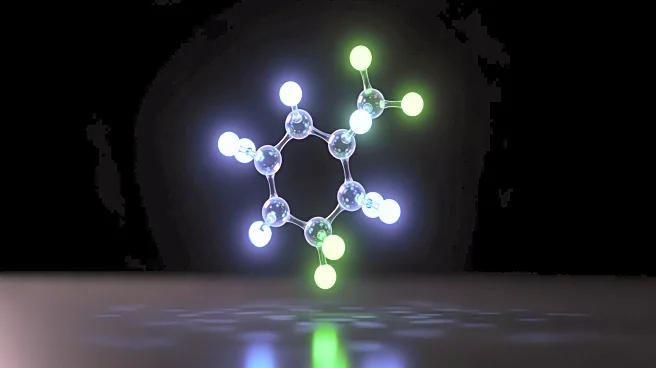What's Happening?
The global molecular spectroscopy market is anticipated to grow significantly, reaching a valuation of $6.4 billion by 2034. This growth is driven by a compound annual growth rate (CAGR) of 5%, as reported
by Allied Market Research. The expansion is largely attributed to the increasing demand for precise analytical techniques within the pharmaceutical and biotechnology sectors. Spectroscopic methods, including nuclear magnetic resonance (NMR), infrared, ultraviolet-visible, and Raman spectroscopy, are becoming essential tools in drug discovery, quality control, and advanced materials research. The NMR spectroscopy segment currently leads the market in terms of revenue, while the Raman spectroscopy segment is expected to experience the fastest growth during the forecast period.
Why It's Important?
The projected growth of the molecular spectroscopy market highlights the increasing reliance on advanced analytical techniques in pharmaceuticals and biotechnology. As these industries continue to innovate and develop new products, the demand for precise and reliable spectroscopic methods will likely increase. This growth could lead to advancements in drug discovery and quality control processes, potentially improving the efficiency and effectiveness of pharmaceutical development. Companies involved in spectroscopic technology stand to benefit from increased market demand, potentially leading to further investment and innovation in the field.
What's Next?
As the molecular spectroscopy market expands, stakeholders in the pharmaceutical and biotechnology sectors may increase their investment in spectroscopic technologies to enhance their research and development capabilities. This could lead to further advancements in drug discovery and quality control processes. Additionally, companies specializing in spectroscopic methods may seek to innovate and improve their technologies to capture a larger share of the growing market. Regulatory bodies may also play a role in ensuring that these technologies meet industry standards and contribute to safe and effective pharmaceutical development.
Beyond the Headlines
The growth of the molecular spectroscopy market may have broader implications for scientific research and education. As demand for these technologies increases, educational institutions may expand their curricula to include more comprehensive training in spectroscopic methods. This could lead to a new generation of scientists and researchers equipped with advanced analytical skills, potentially driving further innovation in pharmaceuticals and biotechnology. Additionally, the increased use of spectroscopic techniques may raise ethical considerations regarding data privacy and the responsible use of technology in drug development.











